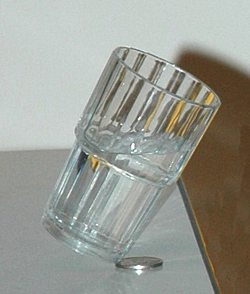
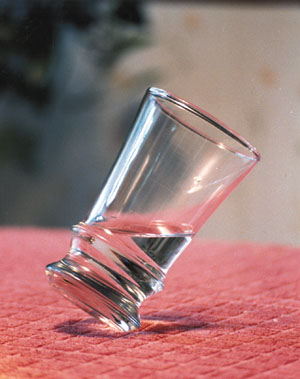
 |
 |
What magic allows these ordinary glasses containing water to balance on one edge? One glass is balanced on a tile-top table, while the other is balanced on the edge of an Australian coin. Seems impossible? Well, if you have a level, stable tabletop you can balance a glass, or a large beaker about 1/3 full of water, on the table, apparently with no support whatsoever. To find out how, read on.
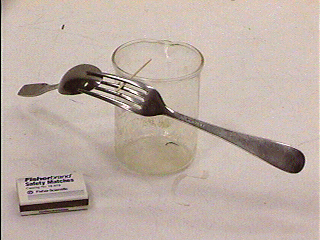 |
 |
Let's do something else first. Find a fork, a spoon, a glass, and some toothpicks. Nest the fork and spoon at their tips, insert a toothpick between the tines of the fork, and then place the toothpick on the rim of the glass. If you slide it along you will find a balance point. Once you find the point, you can break off the rest of the toothpick as seen in the right-hand image. What you have discovered is that the center of mass of the system of spoon and fork is located at the rim of the glass. Any object of any size and shape can be fully supported at its center of mass, no matter how far it extends away from that point in any direction.
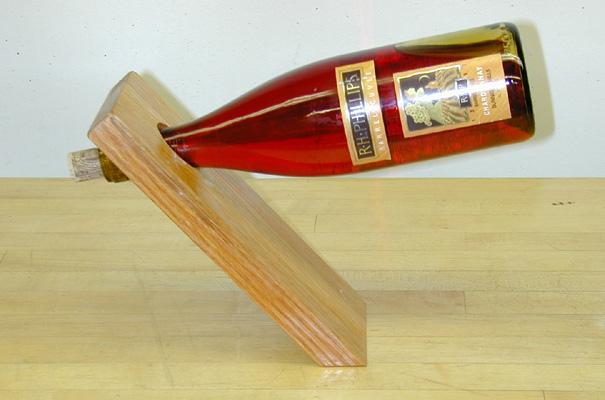
If you are one of those rare, few and unusual people who actually took a course in physics, you may remember the center of mass, and you may remember the standard demonstration done with a board with a hole in it, and a wine bottle. Place the neck of the wine bottle in the hole, and you can stand the system of wine bottle and board on end, as seen in the photo. The center of mass of the system of wine bottle and board is directly above the region where the board rests on the tabletop, so the whole system is supported as if it were a compact object simply resting on the surface of the table.
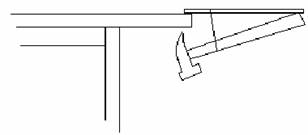
It works from above or below. If you have a hammer, a ruler and a stiff rubber band or hair band, try this: place the handle of the hammer against one end of the ruler, and suspend the head of the hammer from the other end of the ruler with the band. You can now suspend the whole system by the edge of the ruler, from the edge of a table! The center of mass of the system is basically the center of the head of the hammer, and it is quite happy being directly below the point of support, namely the spot where the ruler touches the table.
 |
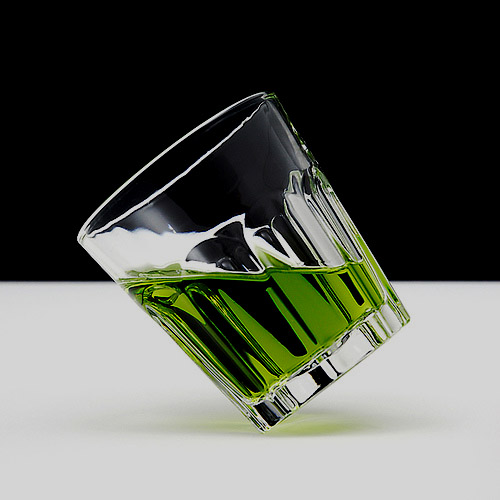 |
Ready now for the real science secret? Back when kids played, say more than 40 years ago, every kid knew about this. Go find a stable, level, smooth table and a salt shaker. Sprinkle a bit of salt on the table... make a tiny cone. Now nestle the edge of the tilted salt shaker into the cone; delicately adjust it until it is balanced. Now... carefully blow away the salt! The few tiny grains of salt that are caught between the table and salt shaker remain, and support it in its unstable equilibrium... like a pencil balanced on its eraser end. When you're ready to try this with a glass of water, use a plastic glass and fill it about 1/3 or 1/4 full. Again, balance the glass carefully on a tiny cone of salt. When it is stable, again blow away the salt. Voila!! When you think you have mastered this concept and skill, you can try balancing such a glass on edge using the edges of the grouted lines of a tiled tabletop, or the grooves in a deeply-engraved coin. Patience... it sometimes takes a minute or more to find the equilibrium position by trial and error. You must wait patiently for the sloshing liquid to settle down before testing each new position.